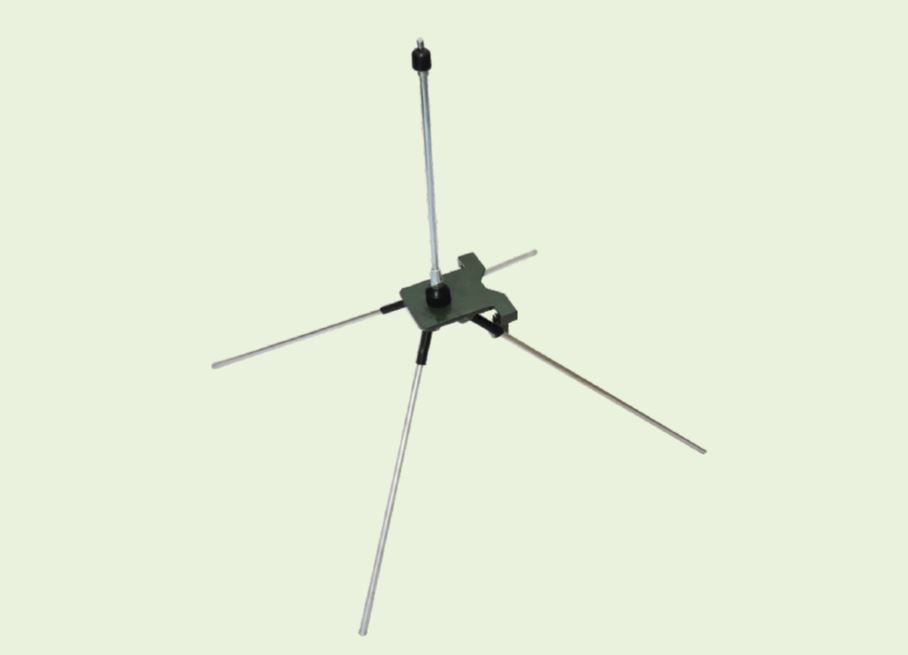Military Standard Frequency Adjustable GP Antenna
DESIGN FEATURES: A ground plane is a flat or nearly flat horizontal conducting surface that serves as part of an antenna, to reflect the radio waves from the other antenna elements. The plane does not necessarily have to be connected to the ground. Ground plane shape and size play major roles in determining its radiation characteristics including gain.
OPERATION:
To function as a ground plane, the conducting surface must be at least a quarter of the wavelength (λ/4) of the radio waves in radius. In lower frequency antennas, such as the mast radiators used for broadcast antennas, the Earth itself (or a body of water such as a salt marsh or ocean) is used as a ground plane. For higher frequency antennas, in the VHF or UHF range, the ground plane can be smaller, and metal disks, screens, and wires are used as ground planes. At upper VHF and UHF, the metal skin of a car or aircraft can serve as a ground plane for whip antennas projecting from it. In microstrip antennas and printed monopole antennas, an area of copper foil on the opposite side of a printed circuit board serves as a ground plane. The ground plane need not be a continuous surface. In the ground plane antenna style whip antenna, the “plane” consists of several wires λ/4 long radiating from the base of a quarter-wave whip antenna.
The radio waves from an antenna element that reflect off a ground plane appear to come from a mirror image of the antenna located on the other side of the ground plane. In a monopole antenna, the radiation pattern of the monopole plus the virtual “image antenna” make it appear as a two-element center-fed dipole antenna. So a monopole mounted over an ideal ground plane has a radiation pattern identical to a dipole antenna. The feed line from the transmitter or receiver is connected between the bottom end of the monopole element and the ground plane. The ground plane must have good conductivity; any resistance in the ground plane is in series with the antenna and serves to dissipate power from the transmitter.
![]() DOWNLOAD TECHNICAL SPECIFICATION SHEET
DOWNLOAD TECHNICAL SPECIFICATION SHEET

